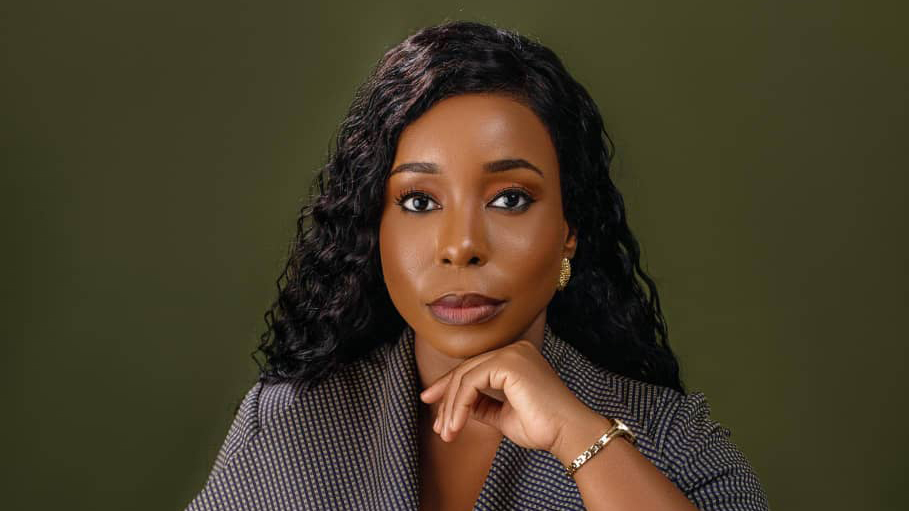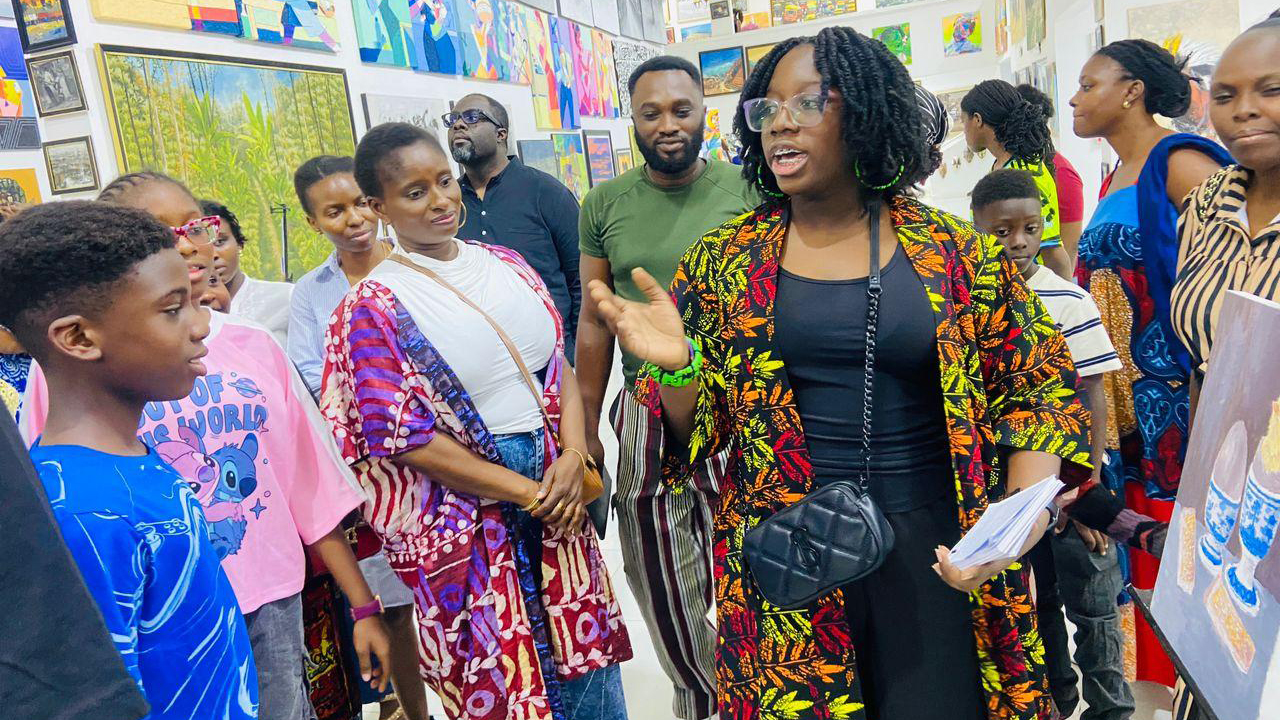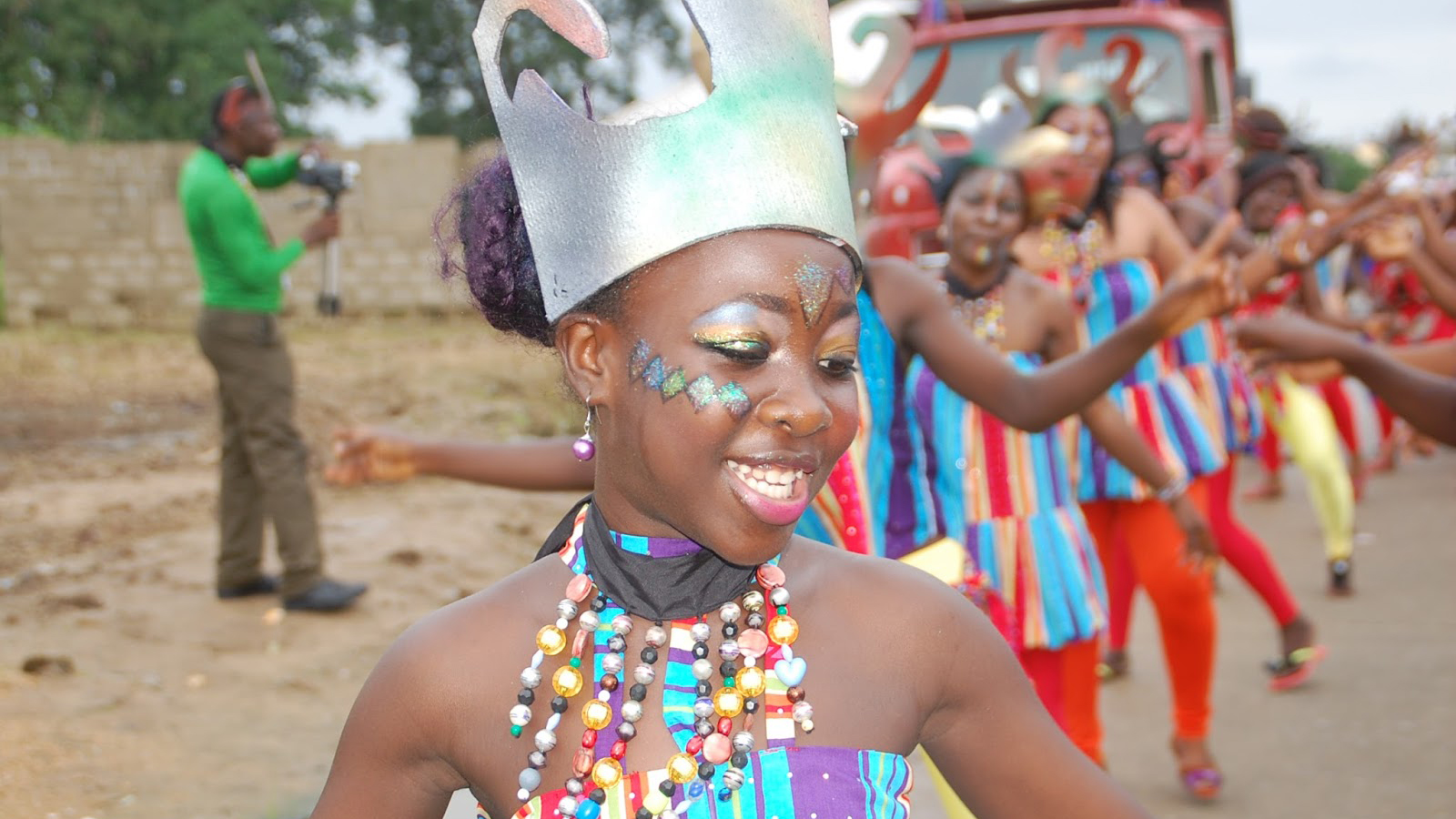Oluwatobi Fakile, a.k.a. TEDA, is a painter, digital artist, storyteller and filmmaker. With over 15 years of practice, he has immersed himself in an expansive exploration of materials and ideas. Spirituality and profound depth of African art are at the heart of his creative philosophy.
Since he started practicing, he has had four solo shows, and part of group shows in Nigeria and the UK. He has also had two successful performance shows sharing his works and projects with over 2000 attendees.
Growing up in Lagos, Nigeria, he was shaped by the city’s vibrant energy, diverse people, and dynamic interactions. This upbringing continues to influence his work, manifesting in his choice of bold, expressive colour schemes and the themes of harmony amid contrast.
“My artistic journey has encompassed traditional and experimental approaches, from pencil works on paper and digital illustrations to murals, fashion illustrations, and even painting on unconventional surfaces like shipping containers. This versatility has allowed me to undertake mural projects for offices, collaborate on brand communications, and push the boundaries of visual storytelling,” Fakile says.
Over the years, he has been able to create a visual language inspired by both modernisation and his cultural background. He reveals, “I created the popular and most used snapchat Lekki geofilter with over 250,000 usage across Lekki, Lagos, which has a vibrant blend of modern style and cultural elements such as the pele tribal mark. I am currently working on a 10-hour painting marathon in Manchester, UK and we aim to further push the boundaries of taking African art to the rest of the world and to build a strong community yearning to get involved with African art and creativity.”
Within this period, he has worked on collaborative projects winning several international awards in Africa and Asia. His contribution to the art scene has been consistently infusing traditional and cultural ideologies and imagery into modern African artistic expression.
He is fascinated by the interplay of conflict and harmony in nature, a theme that frequently emerges in his work. “My projects often engage with this duality, such as a Father’s Day installation in 2022 that invited Nigerian fathers to embrace vulnerability through an open confession box. Similarly, my collaboration with performers, drummers, and masquerades in November 2022 brought my vision to life in a vibrant performance art piece, blending the past with the present.”
According to him, he decided to pursue a career in arts because it has given him a voice to speak about human experience as an African influenced and inspired by the identity of his roots and origin, whilst using cultural and social references.
He says, “I have always wanted to share my ideas and thoughts about African identity in the art space and how this impacts the social and economic lives of our people across the globe. This strong desire to lend my voice puts me in a position to pursue this career path using my art as a tool to drive this.”
In his early years of practise, he realised he had to learn about the business side of art. What that means is that, he started learning about budgeting for materials, handling invoices, billing, and taxes. He learnt about merchandising, and also learnt about working on collaborative budgets that require funding as well.
For him, art is a powerful catalyst for change, reflection, and unity, and he is committed to using his creative voice to inspire, provoke, and connect.
“Art is a voice in itself, a voice important for telling stories, reporting social matters, and ultimately preserving social and cultural elements. Art is very important in addressing social matter, especially when it conveys messages in ways digestible by the audience,” he says.
“Through my art, I weave narratives that delve into the essence of life and the complexities of human emotions. Each piece I create is a reflection of the shared experiences that unite us, an invitation to connect with our collective humanity.”
My work is rooted in a commitment to storytelling—stories that spark introspection and conversations, stories that remind us of our interconnectedness. I employ a rich and diverse range of mediums, including pencils, spray paint, oil pastels, oil paint, and acrylics, to create visual compositions that resonate deeply with viewers. My use of vibrant colours, bold lines, and striking contrasts serves as a visual language to articulate the multifaceted nature of existence. While my artistic expressions are varied, portraiture holds a special place in my practice. It allows me to uncover personal stories and universal truths, creating a mirror for audiences to explore their own emotional landscapes. My Yoruba cultural heritage is a vital aspect of my creative identity. Incorporating cultural symbols, such as tribal marks, I celebrate and preserve the richness of my roots while presenting them in contemporary contexts.”
Over the years, he has developed his work and visual style gaining inspiration from African sculptures; iconography, portraiture, and abstract expressionism. “I have developed this into a visual language that is recognisable and has a strong impact on first time viewers. In my work, I use bright colours representing diversity, abstract figurative shapes and forms, floral elements speaking to growth and life, bold black outlines speaking to the boldness and pride of identity, and tribal marks as an insignia to continue to reinforce culture and social identity, thereby representing my roots and identity,” he says.
His work is in collections across three continents — Africa, Europe, and North America. And they focus on African identity and the duality of the modern African people.
In his work, A sick man (150cmX150cm), he challenges the viewer to take a deep dive into the human mind-perhaps their own mind, thoughtful insights on self-awareness, and the balance between reason and emotion.
His Positive Vibration (80cmX60cm) “Positive Vibration” invites viewers on a transformative journey of self-discovery, encouraging deep introspection with brutal honesty.
The artwork challenges the conventional perceptions of beauty, reshaping ideas of the ideal face and form. It explores the power of true self-awareness, stripping away superficial layers to reveal a more authentic, inner vibration.
Through its bold composition, Positive Vibration urges the viewer to confront their own self-image and question societal norms, guiding them toward a deeper understanding of themselves. The painting becomes a mirror, reflecting not just the surface but the essence of being, celebrating the raw, unfiltered self that often lies beneath projected identities.
Fakile, who was also featured in group exhibition in London flagship event, titled, Unbound Perspective, organised by the ‘Candler Creative Community’, he showed Clapp for Yourself (150cmX150cm). Clapp for Yourself, a thought-provoking art piece that delves into the concept of self-appreciation and acknowledgment of personal efforts and existence. In reflects on daily lives, where humans “struggle to recognise the small strides we make, underestimate our impact, and neglect to take moments for self-appreciation.”






